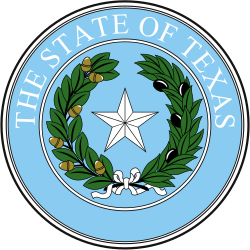Background
Democrats had controlled the Texas Senate since the 1872 elections. [1] Long a part of the Solid South, Republicans had gained a foothold in the state in the past two decades, electing U.S. Senator John Tower in 1961 and electing Richard Nixon with 66% of the vote in 1972, but these gains rarely made much impact in downballot, local races. Democrats had controlled every statewide office since the end of Reconstruction and controlled large supermajorities in the legislature. Even these small numbers were an improvement from the past decade, however, such as after the 1964 election when they held a single seat in the House and none in the Senate. [2]
In the fallout of the Sharpstown stock-fraud scandal, which had rocked Texas politics during the 62nd legislature in 1971, nearly a majority of the entire legislature was composed of newly-elected members after the 1972 election. Led by the "Dirty Thirty," who had kept the scandal at the forefront of the previous session, the new legislature passed a wave of reforms. These included the Texas Open Records Act, campaign finance disclosure requirements, regulations on deceptive trade practices, and new regulations on lobbyists. [3] [4] [5]
The legislature in 1971 had also proposed the calling of a new constitutional convention, which voters approved in 1972. The convention met in the Spring of 1974, but by the time the convention concluded, the vote to pass the new constitution failed to reach the required two-thirds supermajority of the unicameral body by three votes. [6]
This page is based on this
Wikipedia article Text is available under the
CC BY-SA 4.0 license; additional terms may apply.
Images, videos and audio are available under their respective licenses.

